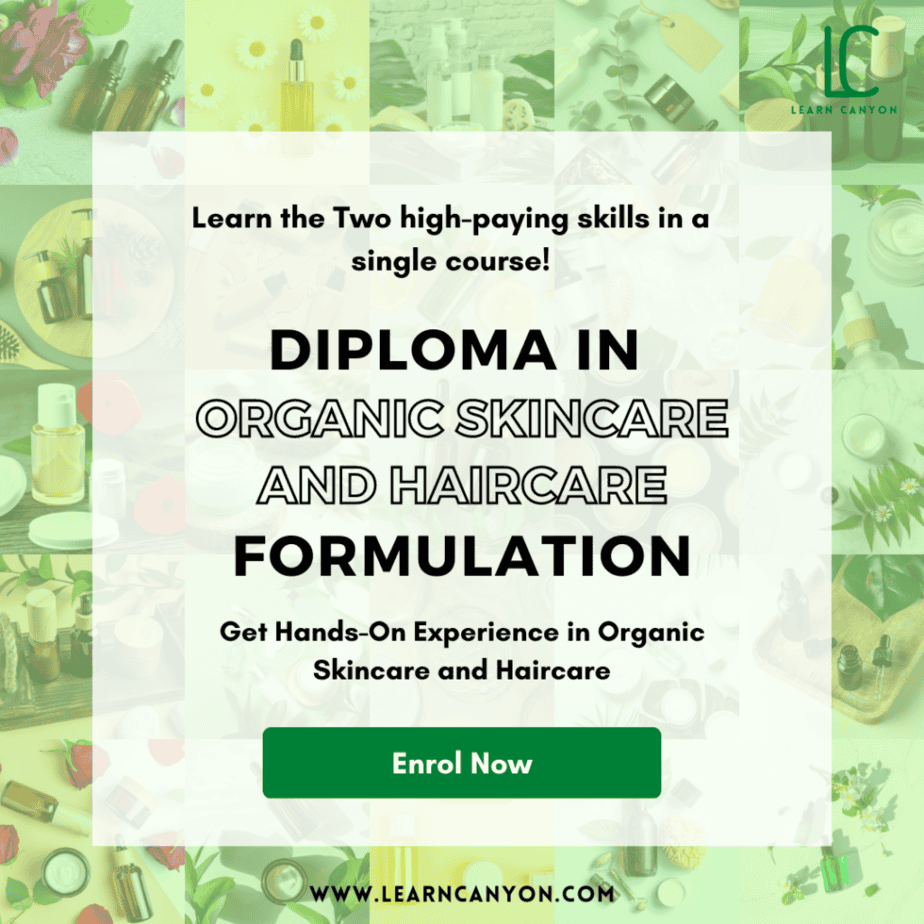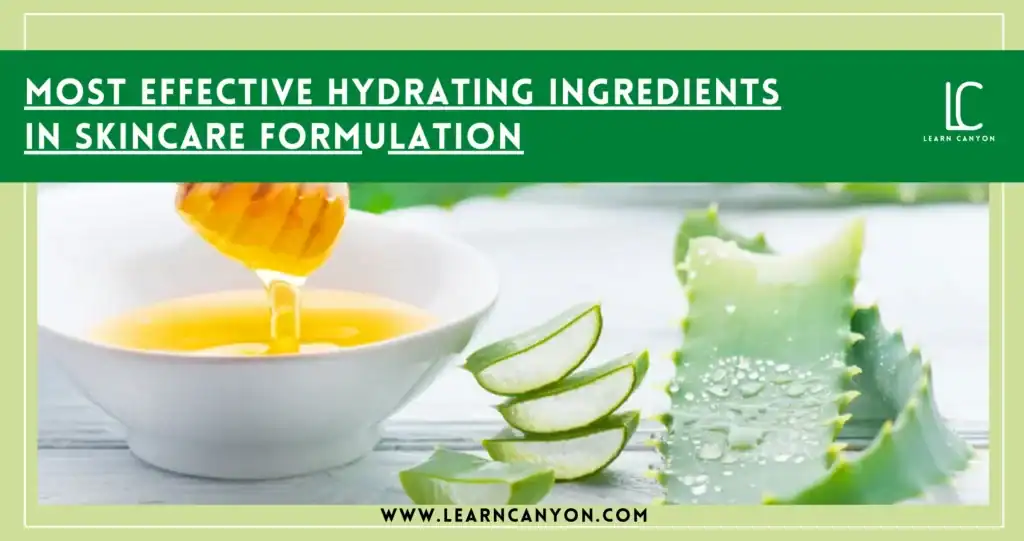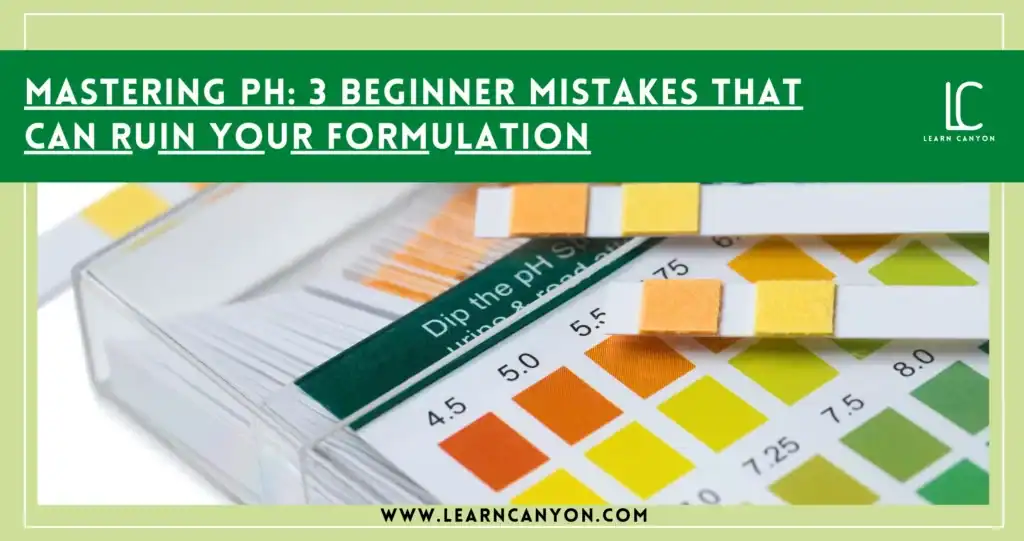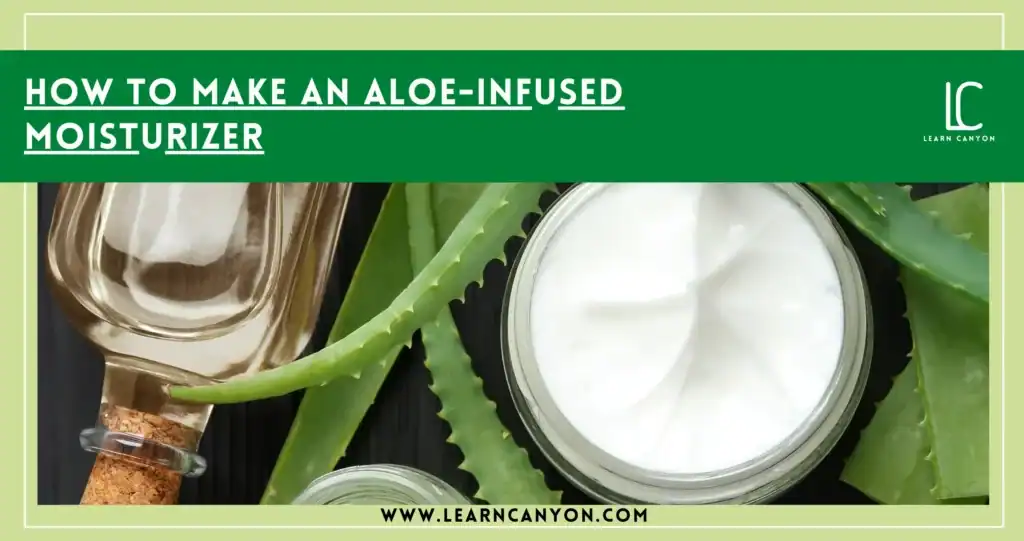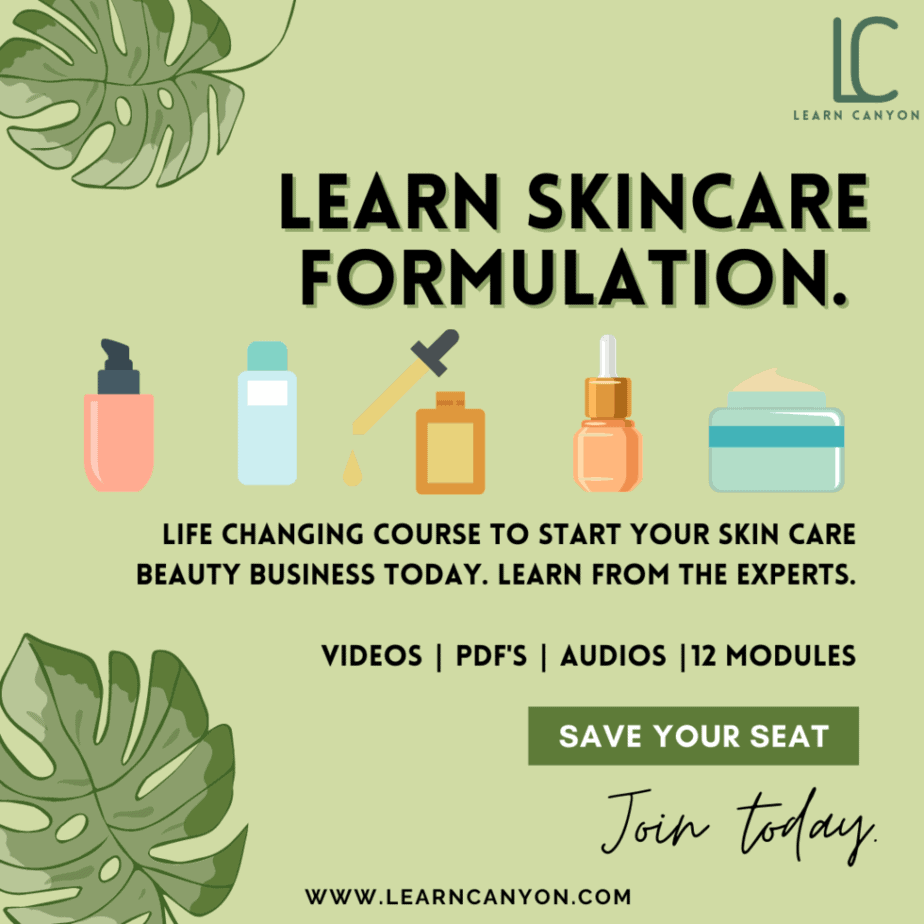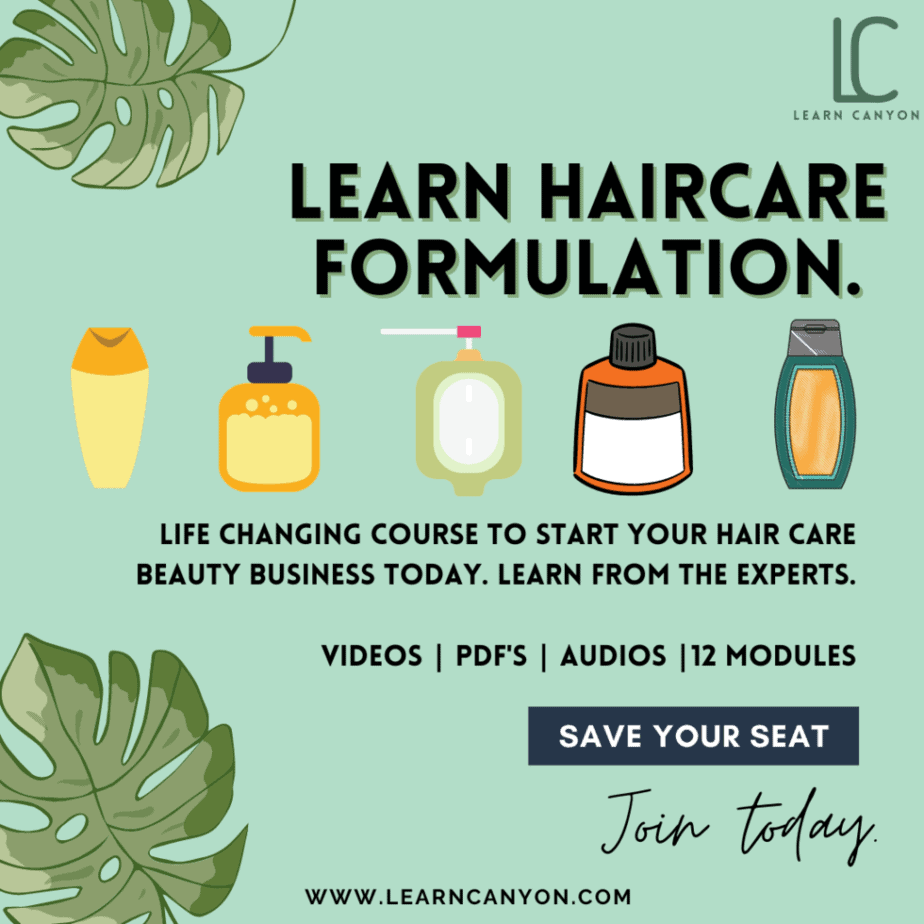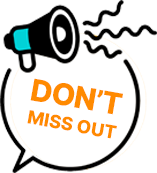Let’s be honest, no matter how many new skincare trends pop up, anti-aging moisturizers continue to hold their ground. And there’s a good reason for that. As a professional formulator, I’ve seen firsthand how powerful a well-crafted moisturizer can be, not just to hydrate the skin but to truly transform its texture, radiance, and resilience over time.
We’re living in a time where people aren’t just looking for wrinkle-reducing miracle creams. They’re craving thoughtful formulations that align with their values: clean, conscious, and effective.
They want something that feels luxurious, sinks in beautifully, and actually delivers results. And that’s where we, as formulators, step in, not just to hydrate skin, but to support the natural aging process with respect, science, and intention.
In this Blog, I’ll walk you through how to create an anti-aging moisturizer that’s not only effective but also feels like a ritual.
Whether you’re formulating for a brand, a client, or just exploring new skincare possibilities, this post will help you blend function with elegance, naturally.
The Skin Aging Process: What Are We Really Targeting?
Before we jump into choosing peptides or plant oils, let’s pause and understand why we’re formulating an anti-aging moisturizer in the first place. What’s happening beneath the skin that we, as conscious formulators, are trying to address?
Skin aging is beautifully complex, it’s not just about fine lines or wrinkles. There are two key types we look at: intrinsic aging, which is the natural process written into our DNA, and extrinsic aging, which is influenced by our lifestyle, things like sun exposure, pollution, stress, sleep patterns, and even diet.
As we age, collagen production slows down, elastin weakens, cell turnover becomes sluggish, and the skin’s natural ability to hold moisture starts to decline. This results in visible signs like sagging, dullness, dryness, uneven tone, and, you guessed it, wrinkles.
But here’s the magic of formulation: we’re not trying to fight aging; we’re supporting the skin to age gracefully. When we formulate an anti-aging moisturizer, we’re targeting these key areas:
- Hydration loss
- Collagen depletion
- Oxidative stress
- Weakened skin barrier
- Uneven pigmentation and dullness
It’s less about reversing the clock and more about restoring balance, boosting skin resilience, and bringing back that healthy glow. And that’s what makes anti-aging moisturizers so rewarding to formulate, because they blend skin science with self-care in the most beautiful way.
Must-Have Actives in Anti-Aging Formulas
Alright, now let’s talk about the real heroes, the actives. These are the ingredients that truly give your moisturizer its purpose and power. And as a formulator, choosing the right actives is like curating a team, you want synergy, not just stars.
When creating an anti-aging moisturizer, I always think in terms of function: hydration, firming, brightening, repair, and protection. Here are some of my absolute go-to ingredients that deliver results without compromising on safety or skin feel:
Niacinamide (Vitamin B3):
This is a dream for almost every skin type. It strengthens the barrier, smooths out texture, evens skin tone, and supports elasticity. I often use it around 3–5% depending on the formula.
Hyaluronic Acid:
You simply can’t skip hydration when it comes to aging skin. Hyaluronic acid (or its salt form, sodium hyaluronate) helps plump the skin by binding water into the deeper layers. Use different molecular weights if you can, it’s magic.
Peptides:
Short chains of amino acids, peptides are like tiny messengers that tell the skin to produce more collagen or behave like its younger self. They’re sophisticated, yes, but also incredibly effective when used correctly.
Bakuchiol:
This plant-based alternative to retinol is a gem. It offers similar anti-aging benefits, like boosting collagen and reducing fine lines, without the irritation. It’s perfect for natural or sensitive-skin formulas.
Vitamin C (Stabilized Derivatives):
Brightening, antioxidant-rich, and great for collagen synthesis. Just make sure you’re using a stable form like Ascorbyl Glucoside or Sodium Ascorbyl Phosphate if you’re not formulating an anhydrous base.

Coenzyme Q10 (Ubiquinone):
This antioxidant helps the skin fight free radicals and improves firmness. It also gives the cream a lovely natural yellow hue, which I personally love.
Botanical Extracts:
Think: Gotu Kola, Green Tea, Licorice Root, Ginseng, each one brings its own blend of antioxidant, anti-inflammatory, and regenerative properties.
It’s not about using all of these in one formula, but selecting a thoughtful combination that addresses multiple aspects of skin aging. And remember, supporting the actives with a smart base and stable environment is just as important as the actives themselves.
Choosing the Right Base: Oils, Butters & Emulsifiers
Now that we’ve got our star actives sorted, let’s talk about the stage they perform on, the base. And trust me, as a formulator, this is where the real artistry comes in. A thoughtfully designed base doesn’t just carry your actives; it enhances their delivery, boosts absorption, and creates that beautiful skin-feel your customers will fall in love with.
So let’s break it down.
Humectants – The Moisture Magnets
We start by making sure the skin can hold onto water. Glycerin, Sodium PCA, Propanediol, Panthenol, and Aloe Vera juice are all great natural humectants. They hydrate the deeper layers and plump the skin beautifully. This is your hydration layer, the cushion for everything else.
Oils & Butters – The Skin Soothers
Choosing your lipids is all about balance. For anti-aging formulations, I prefer:
- Rosehip Oil – rich in pro-vitamin A and helps fade fine lines
- Argan Oil – full of fatty acids and vitamin E
- Marula or Pomegranate Seed Oil – antioxidant-rich and luxurious
- Shea Butter – deeply nourishing, especially for mature skin
- Mango Butter – lighter than shea, but still protective
The trick is to blend fast-absorbing oils with more emollient ones so the formula isn’t greasy but still leaves the skin feeling soft and pampered.
Emulsifiers & Co-Emulsifiers – Holding It All Together
Since we’re creating a cream or lotion, we need a stable emulsion.
I love working with Olivem 1000 or Montanov 68 for natural formulations, they give a silky, smooth finish. For something richer, Ritamulse SCG is also a good pick, especially when paired with cetyl alcohol or cetearyl alcohol to thicken and stabilize.
Your emulsifier also plays a huge role in how the moisturizer feels, is it light and fresh or creamy and cocooning? So always test your ratios!
Bonus Tip: Think About Skin Type
- For dry, mature skin: use a higher oil phase and richer butters.
- For oily or combination skin: keep oils lighter (like Squalane or Jojoba), and use gel-cream textures.
- For sensitive skin: go fragrance-free and keep the ingredient list minimal and barrier-supportive.
Remember, your base is more than a “carrier” for actives, it’s an active part of the formulation itself. When you get this balance right, your moisturizer won’t just work, it’ll feel luxurious, elegant, and unforgettable.

Texture & Sensory Experience
Let’s talk about the part of the formulation that your customer feels first, the texture.
Before the actives get to work, before results even show up… what wins hearts (and repeat purchases) is how the moisturizer melts into the skin.
As formulators, we know performance is crucial, but texture is where science meets emotion. It’s the difference between “just another cream” and “oh wow, what is this?”
Light as Air or Rich and Velvety?
The texture of your moisturizer should match the end user’s needs:
- For a day cream, think light, fast-absorbing, non-greasy, especially if makeup is layered over it.
- For a night cream, we can go a little deeper, rich, nourishing textures that wrap the skin like a soft blanket.
You can manipulate texture by adjusting:
- Oil phase percentage (more oils = richer feel)
- Butter types (mango = soft, shea = dense)
- Co-emulsifiers & fatty alcohols (cetyl alcohol gives that velvety slip)
- Gels or gum thickeners for a bouncy, fresh finish
Slip, Spread, Absorption:
I always test how the moisturizer spreads across the skin. Is it smooth and gliding or draggy and sticky?
A luxurious feel often comes from:
- A smart balance of emollients
- The right ratio of water to oils
- Emulsifiers that don’t leave a waxy film
And of course, absorption rate is key. Your client shouldn’t feel like they have to wait 10 minutes before touching their face again.
Naturally Enhancing Sensory Experience
You can elevate texture and experience by adding:
- Squalane for a weightless finish
- Hydrosols to replace plain water with something soothing and fragrant
- Silk proteins or botanical extracts to leave skin feeling smooth and conditioned
And let’s not forget scent, subtle essential oils like frankincense, neroli, or rose (used mindfully!) can take the experience from skincare to self-care.At the end of the day, our job as formulators isn’t just to make effective products, it’s to create experiences. That “wow” moment when someone first dips their finger into the jar, that soft glide as it touches the skin, that sigh of satisfaction after applying it, that’s formulation magic.
Preservation & Packaging
So you’ve created a beautiful anti-aging moisturizer, nourishing, effective, and luxurious to the touch. But here’s the big question: How do we make sure it stays that way?
This is where preservation and packaging step into the spotlight. And trust me, they’re not afterthoughts, they’re non-negotiables in professional formulation.
Why Preservation Matters So Much
Any water-based product (which includes most moisturizers) is an open invitation for microbial growth. Bacteria, mold, and yeast love water, and without protection, your stunning formulation can turn into a petri dish, fast.
As much as we adore “natural,” a spoiled product isn’t safe, and it certainly won’t deliver those anti-aging benefits anymore.
So, a well-preserved product = a safe, effective, and reliable one.

Preservatives I Trust in Clean Beauty Formulation
You know I’m all about clean formulation, so I work with broad-spectrum preservatives that are approved for natural skincare:
- Geogard ECT (Benzyl Alcohol, Salicylic Acid, Glycerin, Sorbic Acid) – EcoCert-approved and perfect for emulsions.
- Leucidal® Liquid Complete – A fermented, mild option; but best paired with a booster like AMTicide® Coconut.
- Gluconolactone & Sodium Benzoate – A gentle combo that works well with the right pH.
- Dermosoft® OMP or GMCY – Mild, plant-based options that offer both preservation and moisturizing effects.
Always test your preservative in your actual formula, preservation depends on pH, water content, and more. A patch test won’t cut it; you need challenge testing or stability tests for real peace of mind.
Packaging:
Packaging isn’t just about looking pretty on the shelf (though, let’s be honest, we love that too!). It plays a vital role in keeping your formulation safe and potent.
For anti-aging moisturizers, consider:
- Airless pumps – They minimize oxygen exposure and contamination. Great for actives like Vitamin C or peptides.
- Opaque or amber glass jars – Ideal for protecting light-sensitive ingredients like CoQ10 or botanical oils.
- Tubes with precision tips – Less exposure to air and fingers = longer stability.
Choose packaging that complements your product’s texture, your formulation’s shelf life needs, and the luxurious experience you want your client to have.Preservation and packaging might not be the most glamorous parts of formulation, but they are the guardians of everything you’ve created. Without them, even the most powerful actives and elegant textures can lose their magic.
Formula: A Clean & Effective Anti-Aging Moisturizer
Let’s bring everything together with a sample formula, a clean, functional anti-aging moisturizer that’s beginner-friendly, but packed with pro-level ingredients. This formulation is designed to support mature or dull skin by hydrating deeply, restoring elasticity, and boosting the skin’s natural glow.
Think of it as a light-to-medium weight daily moisturizer with a beautiful glide, subtle glow, and no greasy after-feel.
Anti-Aging Moisturizer Formula (100g Batch)
Phase A – Water Phase
- Distilled Water – Qs%
- Aloe Vera Juice – 10% (soothing + hydration)
- Glycerin – 3% (humectant)
- Panthenol (Pro-Vitamin B5) – 2% (barrier repair + hydration)
- Niacinamide – 3% (brightening + strengthening)
- Green Tea Extract (Water-Soluble) – 1% (antioxidant)
- Xanthan Gum or Sclerotium Gum – 0.3% (natural thickener)
Phase B – Oil Phase
- Rosehip Seed Oil – 6% (rich in Vitamin A + rejuvenating)
- Argan Oil – 3% (nourishing + antioxidant-rich)
- Shea Butter (refined) – 4% (emollient + skin-softening)
- Olivem 1000 (Emulsifier) – 5%
- Cetyl Alcohol – 2% (co-emulsifier + texture enhancer)
Phase C – Cool Down Phase
- Coenzyme Q10 (pre-dispersed in oil) – 0.5% (firming + antioxidant)
- Vitamin E (Tocopherol) – 0.5% (antioxidant + oil phase stabilizer)
- Preservative (e.g., Geogard ECT) – 1% (adjust based on your chosen preservative)
- Essential Oil (optional: Neroli or Frankincense) – 0.2%
- pH Adjuster (Lactic Acid or Sodium Bicarbonate) – q.s. to ~pH 5–5.5
Formulation Notes:
- Texture: Smooth, soft cream that absorbs well without being heavy.
- Scent: Naturally soft with a botanical whisper if you add EOs.
- Shelf Life: 6–12 months with proper preservation and packaging.
You can always tweak the richness by adjusting the oil phase, swap oils based on skin types, or boost it with peptides or ceramides if you want to elevate the formula even more.
This formula is your canvas.
Start here, then build in your own brand magic.

Priya’s Pro Tips for Effective Anti-Aging Formulations
Now that you’ve got the basics and even a sample formula to work with, let’s talk about the little things that make a big difference. Because honestly? The secret to a truly effective anti-aging product is in the details.
These are my personal pro tips, lessons I’ve learned from countless hours in the lab, testing on different skin types, and refining what works both scientifically and sensorially.
1. Don’t Overload Your Actives
It’s tempting to throw in every trending ingredient you love, Vitamin C, peptides, bakuchiol, niacinamide, you name it. But skin can only handle so much at once, and actives can clash if not balanced well.
Start with 2–3 key actives that target different pathways (hydration + antioxidant + firming, for example). Keep it elegant and effective.
2. Balance Hydration with Protection
Hydrating the skin is step one, but it’s just as important to lock in that moisture. I always use a good mix of humectants + emollients + occlusives to ensure long-lasting softness and barrier repair.
This trio, often overlooked, is what really helps aging skin feel comfortable and cared for.
3. pH Is More Important Than You Think
Many anti-aging actives, especially niacinamide and Vitamin C derivatives, have their own “happy zone” when it comes to pH.
Test and adjust your final formula to keep it around 5.0–5.5, this supports skin health and product performance.
4. Always Consider Synergy
Some ingredients actually work better together. For example:
- Niacinamide + Panthenol = stronger skin barrier
- Vitamin E + CoQ10 = antioxidant boost
- Peptides + Hyaluronic Acid = firmer, more hydrated skin
Look for these synergies instead of piling things on randomly.
5. Choose Packaging That Protects Your Work
If you’re using ingredients like Vitamin C or CoQ10, don’t pack them into clear jars with wide openings. Air and light degrade them fast.
Go for airless pumps or opaque tubes, your ingredients will thank you.
6. Always Stability Test, Even at Home
Even if you’re making small batches for personal or boutique use, do your due diligence.
Track the texture, scent, color, and pH over a few weeks at room temperature, in heat, and in the fridge.
The sooner you learn how your formula behaves, the more confident you’ll be scaling it.
Anti-aging formulation isn’t just about chasing youth, it’s about creating products that support the skin with care, intention, and a bit of everyday luxury. And with the right mindset and smart formulating, your moisturizer can do so much more than moisturize.
Conclusion
If there’s one thing I’ve learned over the years as a formulator, it’s this, great skincare is never just about the ingredients.
It’s about the intention behind the formula. The thoughtfulness in how each component is chosen, balanced, and blended to serve a purpose. That’s where the true magic of anti-aging skincare lives.
Formulating an anti-aging moisturizer isn’t about chasing eternal youth or promising unrealistic results. It’s about creating something that supports the skin, restores hydration, encourages renewal, and helps people feel more confident in their own glow, at every age.
Whether you’re formulating for your brand, your clients, or simply for the joy of creation, always come back to this:
Is it effective?
Is it kind to the skin?
Does it offer an experience worth returning to?
That’s the kind of formulation that doesn’t just sell, it connects.





